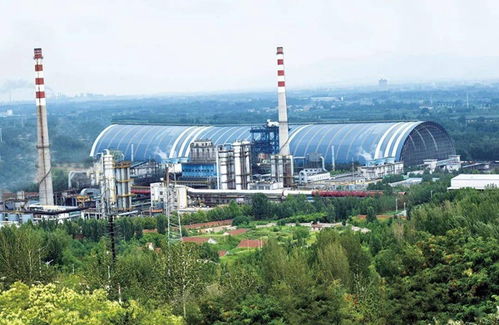The Global Market for Cotton Yarn Sales in the Textile Industry
Cotton yarn is a crucial component of the textile industry, with its sales volume reaching a global scale. The market for cotton yarn sales in the textile industry has experienced significant growth in recent years, driven by factors such as rising demand from emerging markets and increasing production capacity in developed countries. This growth has led to increased competition among producers, as well as heightened focus on quality and sustainability. As a result, many manufacturers are investing in new technologies and processes to improve their competitiveness and meet consumer demands. Additionally, there is a growing trend towards using recycled materials in the production of cotton yarn, reflecting a shift towards more environmentally responsible practices. Overall, the global market for cotton yarn sales in the textile industry is poised for continued growth, driven by various factors including rising demand, increased production capacity, and changing consumer preferences.
Introduction: Textile industry is one of the most crucial sectors in the global economy, contributing significantly to employment generation and economic growth. Among the various products that make up this industry, cotton yarn stands out as a critical component due to its versatility and wide-ranging applications. Cotton yarn is used in a variety of textile fabrics ranging from casual wear to high-end fashion garments, making it an essential commodity in the global market. In this article, we will explore the global market for cotton yarn sales in the textile industry, highlighting the key players involved, their strategies, and the challenges they face.
Key Players in the Cotton Yarn Market:

-
Domestic Manufacturers: Many countries have established their own cotton yarn manufacturing facilities to cater to local demand. These manufacturers often produce a range of yarns with varying qualities and specifications to meet the needs of different industries. For instance, India has a significant presence in the cotton yarn market, producing over 20% of the world's total production.
-
International Manufacturers: Some of the largest cotton yarn manufacturers operate globally, sourcing raw materials from different countries and producing yarns for export to different markets. These companies are known for their advanced technology, quality control measures, and competitive pricing.
-
Wholesalers and Retailers: These are the intermediaries who bring together manufacturers and consumers, facilitating the sale of cotton yarn products. They play a crucial role in connecting producers with buyers, ensuring the availability of yarns in different regions.
-
Consumers: End-users such as apparel manufacturers, home furnishings firms, and other textile industries rely on cotton yarn for their products. These consumers demand high-quality yarns that meet specific standards and requirements, driving innovation and development in the industry.
Strategies of Key Players in the Cotton Yarn Market:
-
Innovation: To stay ahead in the competitive market, manufacturers invest heavily in research and development to develop new yarns with improved properties such as strength, durability, and softness. This helps them differentiate their products from competitors and meet changing consumer demands.
-
Cost Optimization: Manufacturers aim to reduce costs while maintaining or improving product quality. This involves adopting efficient production processes, using cost-effective raw materials, and implementing lean management practices.
-
Brand Building: Companies recognize the importance of building a strong brand image to enhance their reputation in the market. They invest in marketing campaigns, public relations, and customer loyalty programs to increase brand awareness and trust among consumers.
-
Global Expansion: As the global market becomes increasingly interconnected, manufacturers expand their operations into new markets to tap into emerging opportunities. This involves acquiring subsidiaries or partners in foreign countries, establishing partnerships with local suppliers, and investing in infrastructure to facilitate trade.
Challenges Faced by Key Players in the Cotton Yarn Market:
-
Supply Chain Challenges: The global nature of the cotton yarn market means that supply chains can be complex and vulnerable to disruptions such as natural disasters, political unrest, and trade disputes. Manufacturers must ensure that their supply chains are robust and resilient to minimize these risks.
-
High Raw Material Costs: The cost of cotton raw materials is a significant factor affecting the profitability of cotton yarn manufacturers. Price volatility in the global market can impact the profit margins of these companies, necessitating continuous monitoring and adjustment of prices and production levels.
-
Environmental Regulations: As concerns about sustainability and environmental protection grow, manufacturers must comply with increasingly stringent regulations on waste management, water usage, and emissions. These regulations can add significant costs to their operations and require innovative solutions to mitigate negative impacts.

-
Technological Advances: The rapid pace of technological advancements in the textile industry presents both opportunities and challenges for cotton yarn manufacturers. On the one hand, new technologies such as automation and artificial intelligence can improve efficiency and reduce labor costs. On the other hand, staying ahead of technological trends requires ongoing investment in R&D and workforce training.
Conclusion: The cotton yarn market is highly competitive, with numerous players vying for a share in the global textile industry. By focusing on innovation, cost optimization, brand building, and global expansion, manufacturers can remain relevant and thrive in this dynamic market. However, they must also navigate the challenges of supply chain management, raw material costs, environmental regulations, and technological advancements. As the global textile industry continues to evolve, cotton yarn manufacturers must adapt their strategies to meet changing consumer preferences and regulatory requirements.
大家好,今天我们将探讨纺织厂棉线销售的话题,随着纺织行业的快速发展,棉线作为纺织生产中的重要原材料,其销售情况备受关注,下面我们将从多个角度详细分析纺织厂棉线销售的相关情况。
纺织厂棉线销售现状
- 市场需求:随着人们生活水平的提高,对纺织品的需求不断增加,特别是对棉线的需求也在持续增长。
- 销售渠道:纺织厂主要通过线上和线下两种渠道销售棉线,线上渠道包括电商平台、社交媒体等,线下渠道则包括各类零售店、批发市场等。
- 竞争情况:纺织行业市场竞争激烈,各大品牌都在努力提高产品质量和销售业绩。
案例分析
销售数据表格说明
| 时间段 | 销售额(万元) | 客户群体 | 销售渠道 | 竞争对手情况 |
|---|---|---|---|---|
| 近期 | 较高水平 | 各类消费者 | 线上电商平台、线下零售店 | 其他品牌竞争激烈 |
| 历史数据 | 根据实际统计数据 |
案例说明
某纺织厂作为行业内的知名品牌,其棉线销售情况一直保持稳定增长,该厂主要通过线上电商平台和线下零售店两种渠道销售棉线,在销售过程中,该厂注重产品质量和客户服务,不断提高客户满意度,该厂还积极拓展新的销售渠道,如与电商平台合作开展促销活动等。
销售策略与建议
- 提高产品质量:纺织厂应注重提高棉线的质量,采用优质原料,确保产品质量符合国家标准,加强生产工艺控制,提高产品附加值。
- 拓展销售渠道:纺织厂应积极拓展新的销售渠道,如与电商平台合作开展促销活动、参加行业展会等,加强与下游客户的沟通与合作,提高销售业绩。
- 提高客户服务水平:纺织厂应注重客户服务,提供优质的售前、售中、售后服务,通过建立良好的客户关系,提高客户满意度和忠诚度。
- 加强品牌建设:纺织厂应加强品牌建设,提高品牌知名度和美誉度,通过开展品牌宣传活动、参加行业展览等活动,提高品牌影响力。
纺织厂棉线销售是一个复杂而重要的领域,需要注重产品质量、销售策略、客户服务等多个方面,通过加强品牌建设、拓展销售渠道、提高产品质量和客户服务水平等措施,纺织厂可以不断提高销售业绩和市场份额,纺织厂还需要不断关注市场变化和行业发展趋势,及时调整销售策略和经营思路,以适应市场变化和行业发展的需要。
Articles related to the knowledge points of this article:
Exploring the Rich Tapestry of Rushans Handicraft Textiles
The Efficient Operation of Textile Factory Water Shroud Fan System
The Story of QuanMei Textile Factory



